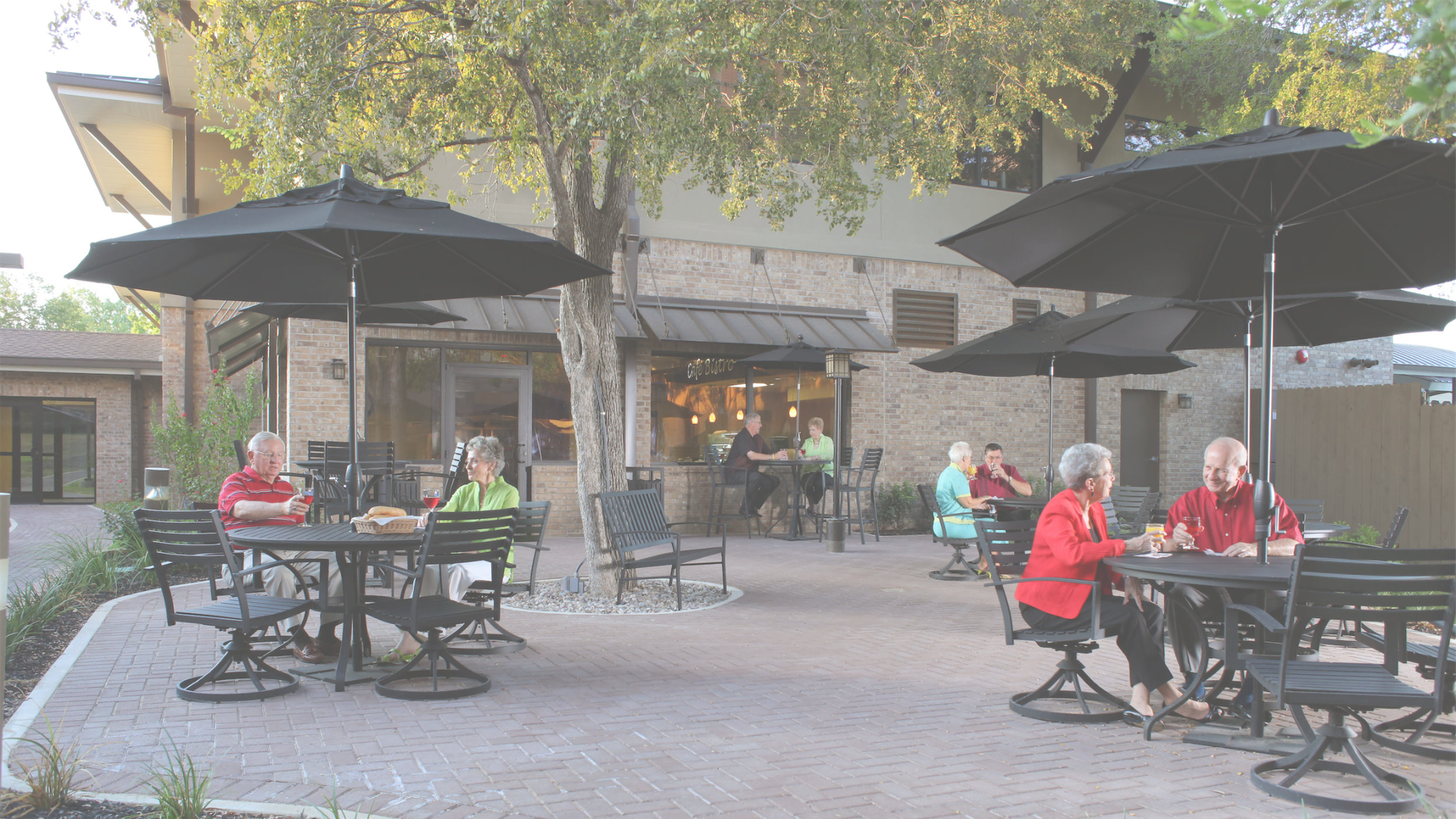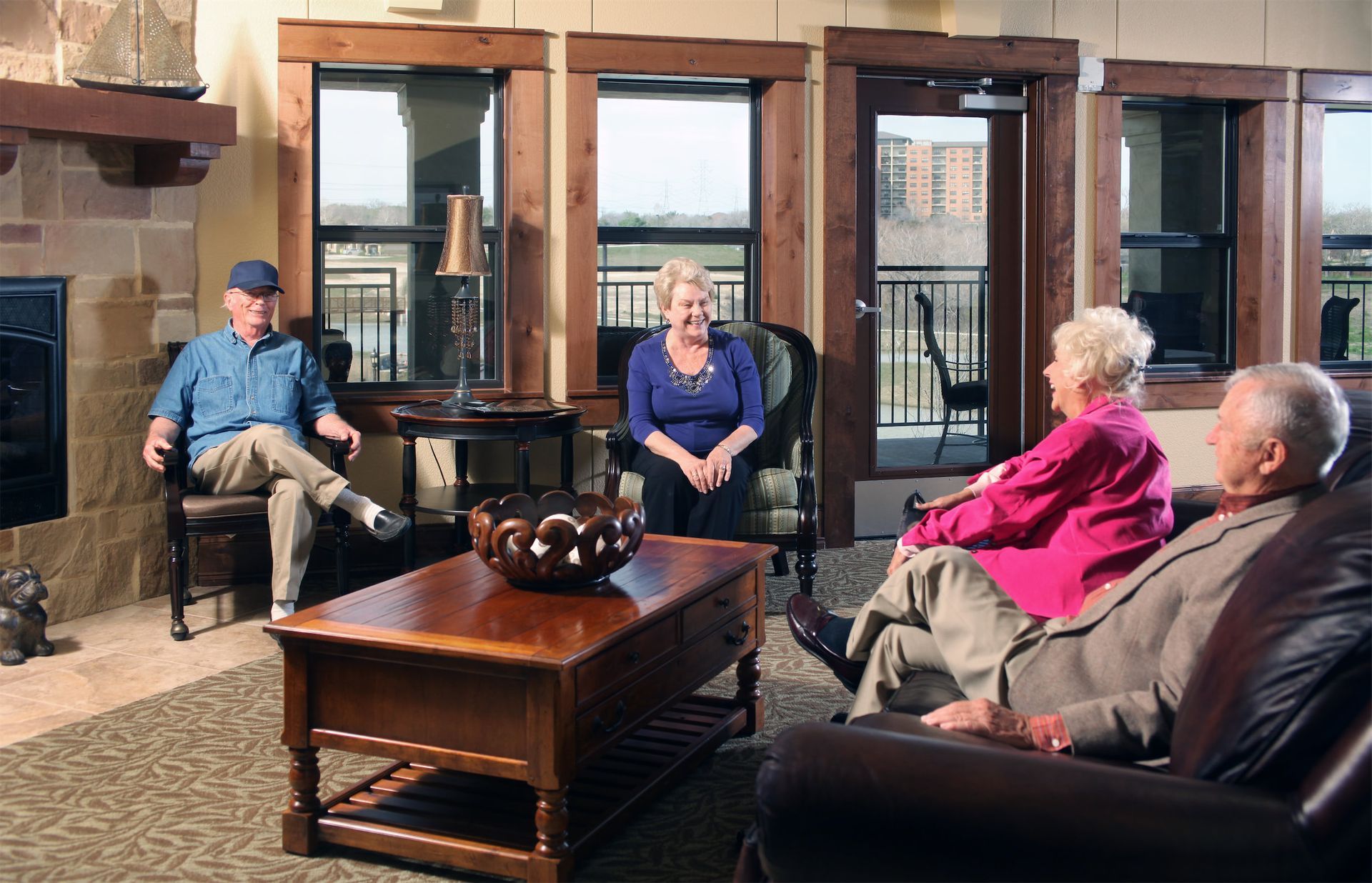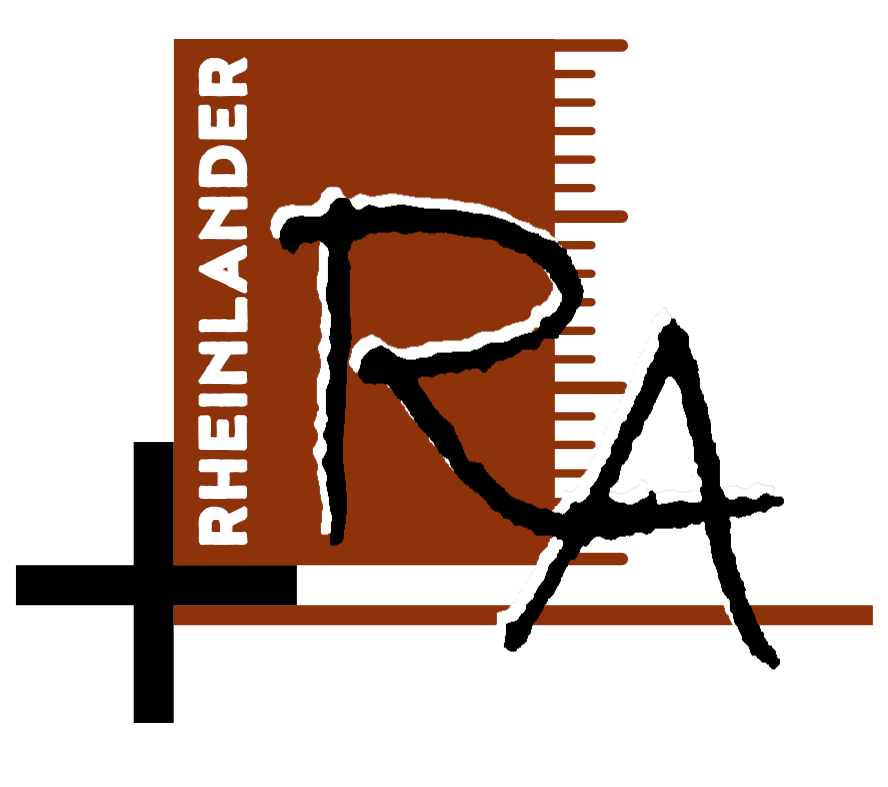A New Approach to Senior Living and Care
Senior living and care are evolving—no longer just about assistance, but about lifestyle, wellness, and community.
The most successful innovative retirement communities and senior care homes focus on creating vibrant, amenity-rich environments where seniors can thrive physically, socially, and emotionally.
At Rheinlander Architects, we specialize in designing thoughtfully crafted spaces that enhance the senior living experience. Whether designing for assisted living, memory care, or independent living, our approach prioritizes comfort, accessibility, and community engagement to support active adult communities.
From resident-centered design to sustainability, here are the eight key elements shaping the future of modern senior living.
Key Element 1: Resident-Centered Design
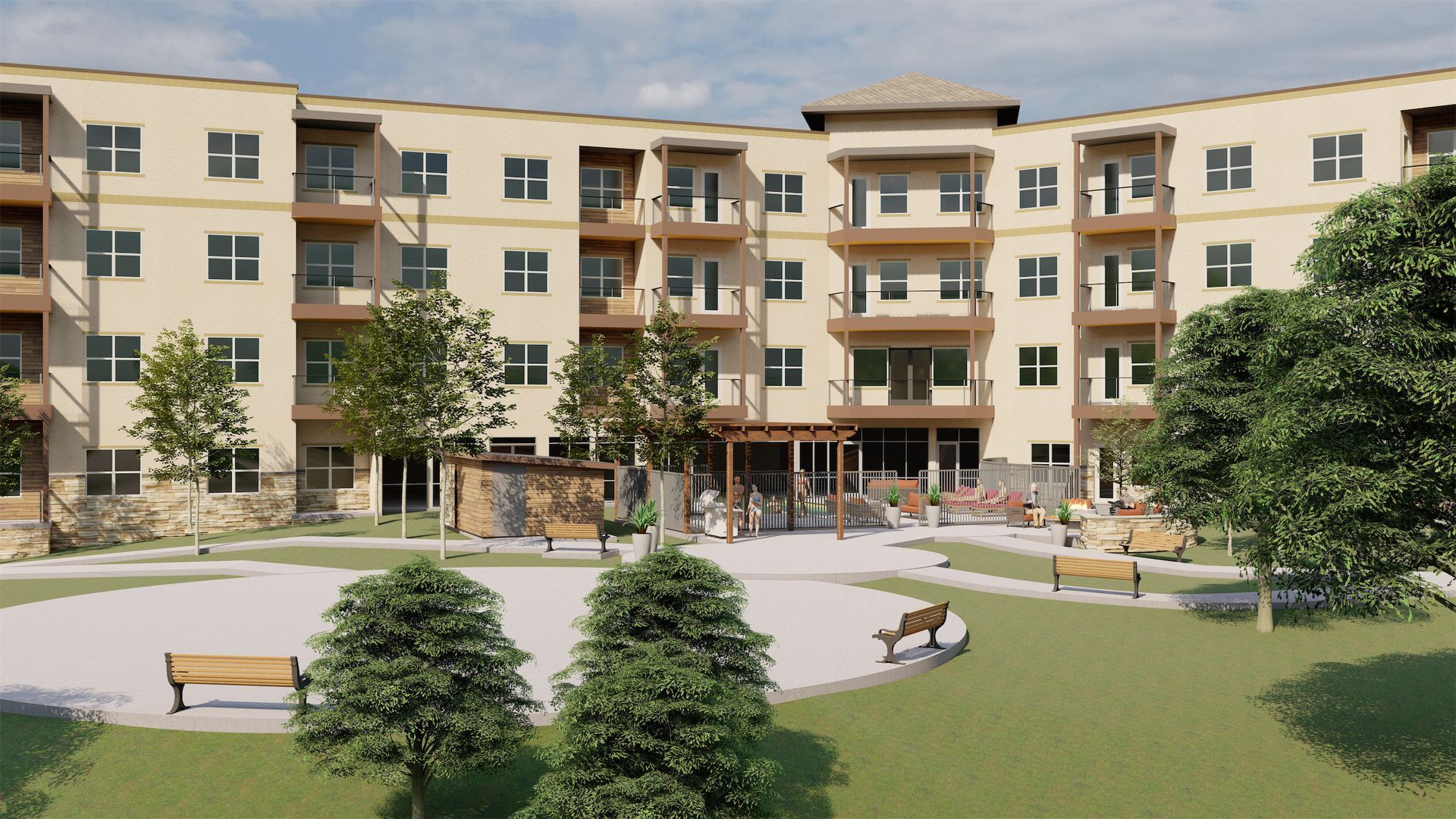
Communities should be designed to promote autonomy, comfort, and engagement while offering choices that enhance quality of life.
More than ever, seniors expect spaces that allow them to maintain their independence while offering support when needed. Providing a variety of living arrangements and lifestyle options ensures that residents can tailor their experience to fit their unique needs and preferences.
To bring this design element to life, focus on:
- Flexible layouts that adapt to changing mobility and lifestyle needs.
- Private restrooms for dignity, privacy, and infection control.
- Personalized spaces, such as an art studio, spa, or lounge, for creativity and relaxation.
- Self-service amenities, like pantries and grab-and-go dining, to support independence.
“The best senior living communities are not just places to reside—they are environments that foster autonomy, connection, and well-being. Thoughtful design, from private living spaces to accessible social hubs, directly impacts how residents experience daily life, and ultimately, how long they choose to stay.”
— Paul Rheinlander, Founder of Rheinlander Architects
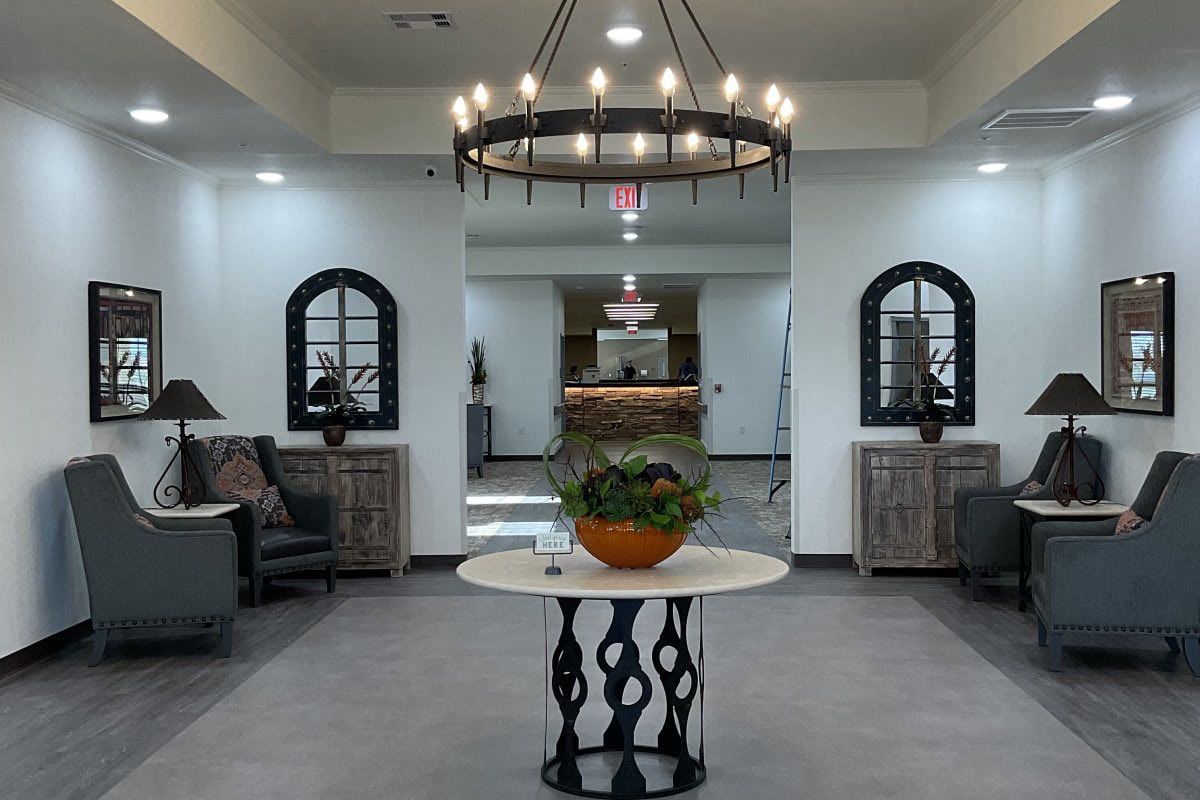
Key Element 2: Accessibility & Universal Design
Accessibility ensures that residents of all mobility levels can move freely and safely within their community.
A well-designed senior living space removes physical barriers, making it easier for residents to navigate their environment independently while feeling secure. Whether walking through a hallway, using community spaces, or enjoying the outdoors, these spaces should be seamless and intuitive for all.
To ensure accessibility for all residents, communities should incorporate:
- Step-free entrances, wide hallways, and wheelchair-friendly layouts for easy movement.
- Non-slip flooring and strategically placed grab bars to reduce fall risks.
- Clear wayfinding signage to assist residents, including those with cognitive impairments.
- Multi-use spaces, including a lounge and clubhouse, designed for ease of access.
- Outdoor spaces with smooth pathways and shaded seating for safe and enjoyable recreation.
Key Element 3: Wellness & Biophilic Design
Biophilic design is an approach that incorporates natural elements into built environments to promote health and wellness.
Studies show that exposure to natural light, greenery, and fresh air can reduce stress, improve mood, and enhance cognitive function, making it a key consideration in senior living communities.
To create a wellness-focused environment, incorporate:
- Maximized natural light to improve sleep and mood.
- Indoor-outdoor connections, like walking paths, gardens, and courtyards to connect to any surrounding landscape.
- Dynamic lighting systems that mimic natural daylight cycles for better sleep.
- Wellness programs, including spa services, fitness centers, and mindfulness activities.
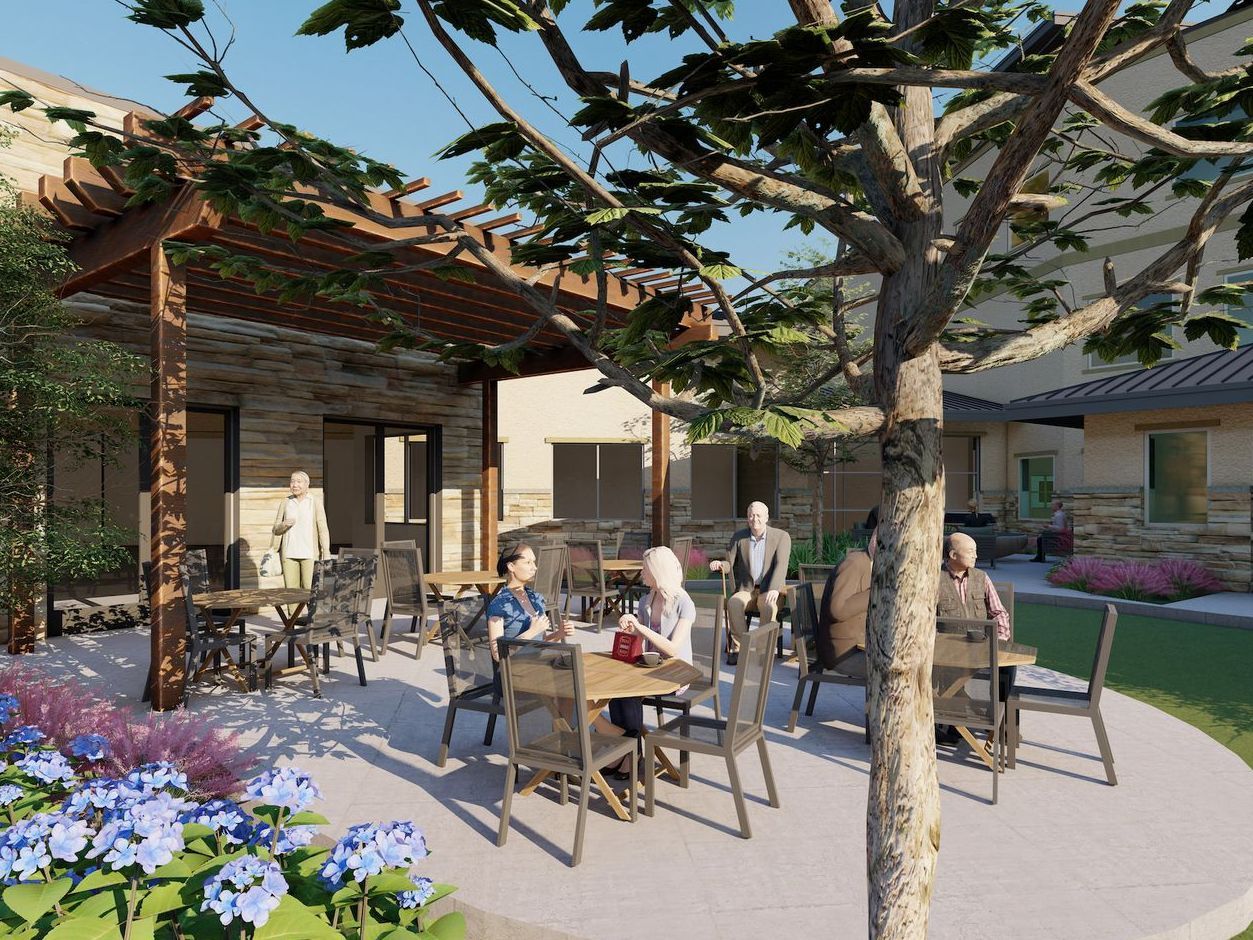
Key Element 4: Community & Social Engagement
Social interaction is essential for mental and emotional well-being.
Seniors who stay socially engaged often experience improved cognitive health, lower rates of depression, and a greater sense of purpose. Retirement communities should provide engaging, welcoming spaces where residents can build relationships and participate in activities that give them a sense of belonging.
To encourage social engagement, focus on:
- Common areas, including a lounge and multipurpose rooms, for organic interactions.
- Multi-use spaces that support resident-driven clubs, events, and programs.
- Intergenerational engagement, with family-friendly and community-based activities.
- Outdoor recreation spaces, such as pickleball courts, a pool,or a fitness center, for active engagement.
Key Element 5: Safety & Smart Technology
Technology plays an essential role in keeping residents safe while preserving independence.
As senior living spaces become more advanced, smart technology can reduce fall risks, enhance security, and improve daily convenience.
To integrate smart technology effectively, consider:
- Emergency response systems and fall detection for peace of mind.
- Automated lighting and temperature controls to enhance safety and comfort.
- Secure yet non-restrictive environments, especially for memory care and skilled nursing.
- Telehealth-enabled spaces for virtual medical consultations and check-ups.
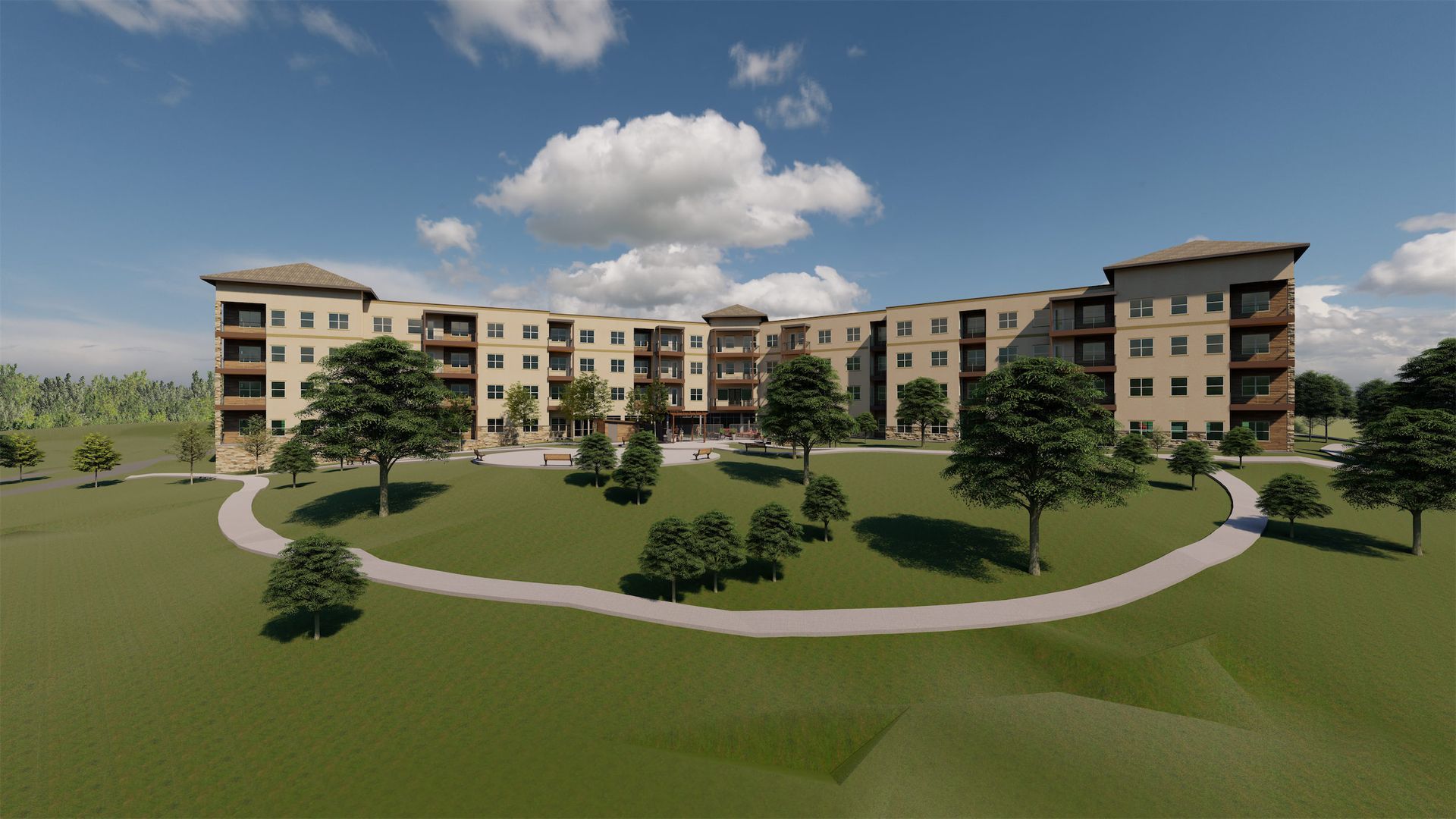
Key Element 6: Comfort & Home-Like Atmosphere
Modern senior living should feel like home, not a facility. Design choices should create a sense of calm, warmth, and familiarity, helping residents feel comfortable and secure.
To create a home-like environment, focus on:
- Residential-style interiors with warm, high-quality furnishings.
- Soft, natural color palettes to promote a sense of relaxation.
- Customizable private and shared living options for different care levels.
- Amenity spaces, such as an art studio, spa, and lounge, designed for relaxation and socialization.
“Designing for seniors isn’t just about meeting today’s needs—it’s about anticipating the evolving expectations of aging populations. A well-designed community gives residents choices, whether it’s when they eat, how they engage socially, or how they interact with their environment. That flexibility is key to enhancing both independence and quality of life.”
— Paul Rheinlander, Founder of Rheinlander Architects
Key Element 7: Operational Efficiency in Design
A well-designed assisted living or skilled nursing facility should balance resident comfort with staff efficiency to ensure high-quality care.
Thoughtful layouts and intuitive workflows help caregivers respond quickly to residents' needs while maintaining a calm, welcoming atmosphere. By designing spaces that support seamless movement, clear communication, and accessibility to essential resources, staff can work more effectively, reducing stress and improving care quality.
To optimize operational efficiency, focus on:
- Strategically placed staff stations for better visibility and response times.
- Efficient workflows that minimize unnecessary movement and streamline care.
- Multi-purpose rooms that serve both resident activities and staff operations.
Key Element 8: Sustainability & Energy Efficiency
Sustainable design is becoming a key focus in senior living communities, helping to reduce environmental impact while also improving long-term operational efficiency.
By incorporating energy-efficient materials, smart technology, and eco-friendly design strategies, communities can create spaces that are not only comfortable and cost-effective but also environmentally responsible. A focus on sustainability ensures that resources are conserved, operating costs are reduced, and residents benefit from a healthier indoor environment.
To integrate sustainability into senior living, focus on:
- Durable, low-maintenance materials for cost-effective longevity.
- Energy-efficient systems to lower long-term operational costs.
- Smart water conservation strategies for resource management.
- Eco-friendly materials that reduce environmental impact.
As senior living design continues to evolve, innovative communities are incorporating sustainability alongside resident-centered features, technology, and wellness-focused environments. Learn more about the latest Top Design Trends for Senior Living and Care in 2025 and how they are shaping the future of retirement communities.
Designing Innovative Senior Care and Retirement Communities
By embracing resident-centered design, smart technology, and wellness-driven amenities, we are helping shape the future of senior living—one that prioritizes independence, well-being, and community.
Great design enhances lives, and at Rheinlander Architects, we’re committed to making that vision a reality.
If you're planning a senior living community and want to create a space that prioritizes comfort, accessibility, and innovation,
contact Rheinlander Architects today. Our team is ready to collaborate with you to design environments that support both residents and caregivers, ensuring long-term success for your community.
